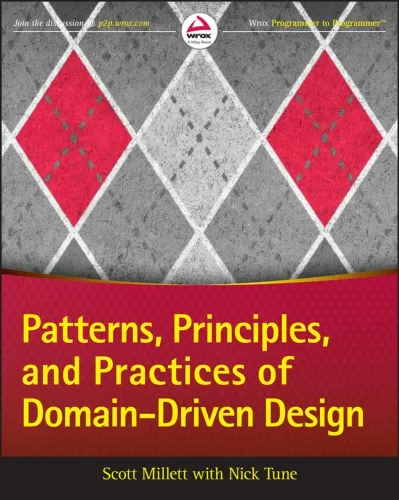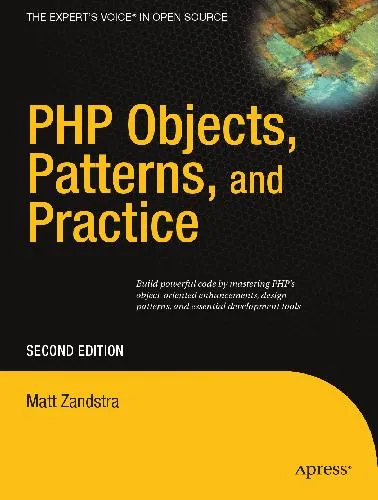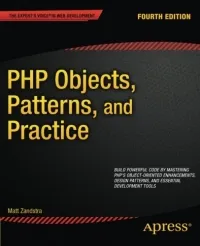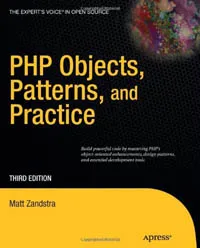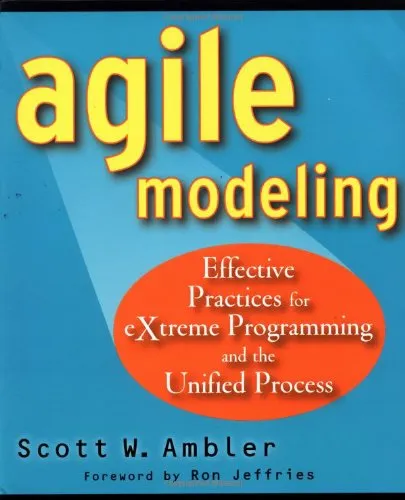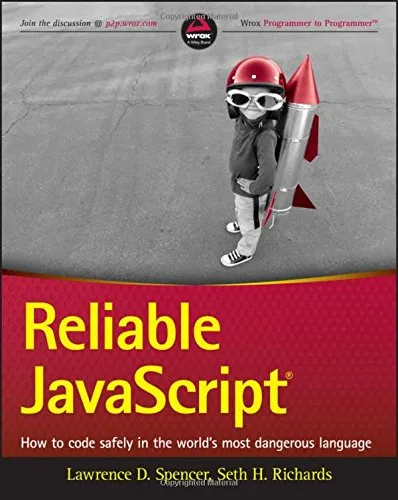Patterns, Principles and Practices of Domain-Driven Design
4.6
بر اساس نظر کاربران

شما میتونید سوالاتتون در باره کتاب رو از هوش مصنوعیش بعد از ورود بپرسید
هر دانلود یا پرسش از هوش مصنوعی 2 امتیاز لازم دارد، برای بدست آوردن امتیاز رایگان، به صفحه ی راهنمای امتیازات سر بزنید و یک سری کار ارزشمند انجام بدینکتاب های مرتبط:
معرفی کتاب
کتاب Patterns, Principles and Practices of Domain-Driven Design نوشته اسکات میلت و نیک تون یکی از منابع برجسته برای طراحی نرمافزارهای پیچیده مبتنی بر اصول Domain-Driven Design (DDD) است. این کتاب به توسعهدهندگان و معماران نرمافزار کمک میکند تا سیستمهای دقیقتری طراحی کنند که بر اساس نیازهای واقعی کاربران و اهداف کسبوکار شکل گرفتهاند.
خلاصهای از کتاب
این کتاب به سه بخش اصلی تقسیم شده است که خوانندگان را از اصول اولیه به سمت الگوها و بهترین شیوههای DDD هدایت میکند:
- بخش اول: اصول Domain-Driven Design: در این بخش نویسندگان توضیح میدهند که چگونه میتوان به درک عمیقی از دامنهی مسئله دست یافت. این بخش شامل مفاهیمی مانند Ubiquitous Language، Context Maps و Bounded Contexts است.
- بخش دوم: الگوها و کاربرد آنها: در این قسمت نویسندگان به عمیقتر بررسی کردن الگوهایی مانند Aggregates، Entities، Value Objects و Repositories میپردازند. این الگوها به شما کمک میکنند سیستمهای ماژولار و قابل نگهداری بسازید.
- بخش سوم: بهترین شیوهها: در بخش پایانی به چالشهای رایج در طراحی نرمافزار و نحوهی برطرف کردن آنها پرداخته میشود. همچنین موضوعاتی پیرامون Event Sourcing و CQRS نیز پوشش داده شدهاند.
نکات کلیدی
در ادامه به برخی از مفاهیم کلیدی که از این کتاب میتوانید یاد بگیرید اشاره میکنیم:
- Ubiquitous Language: ایجاد زبانی مشترک بین تیمهای فناوری و کسبوکار که به ارتباط آسانتر و درک بهتر کمک میکند.
- Bounded Context: شناسایی مرزهای منطقی در دامنهها و تفکیک مسئولیتها برای مدیریت پیچیدگی.
- Aggregates: تمرکز بر انسجام مدل دامنه و تضمین کنترل صحیح بر دادهها.
- Event Sourcing و CQRS: استفاده از رویکردهای مدرن برای مدیریت وضعیت سیستم و بهبود مقیاسپذیری.
نقل قولهای معروف از کتاب
“Software design is a continual expression of the domain knowledge, and thus, the better the understanding of the domain, the better the software.”
“Bounded contexts are not just technical boundaries, but also organizational and strategic boundaries.”
چرا این کتاب مهم است؟
در دنیای امروزی که نرمافزارها بهطور فزایندهای پیچیدهتر شدهاند، داشتن رویکردهایی که بتوانند هم نیازهای فنی و هم نیازهای کسبوکار را پوشش دهند ضروری است. این کتاب یک راهنمای جامع برای درک و بکارگیری DDD ارائه میدهد، که نه تنها به چالشهای تکنیکی پاسخ میدهد، بلکه به تیمهای نرمافزاری کمک میکند تا ارزش واقعی برای کسبوکار ایجاد کنند. این کتاب پایه و اساس محکمی برای مهندسان نرمافزار فراهم میکند تا بتوانند سیستمهای پایدار، قابل گسترش و نزدیک به واقعیت طراحی کنند.
Introduction to Patterns, Principles and Practices of Domain-Driven Design
"Patterns, Principles and Practices of Domain-Driven Design" is a comprehensive guide to mastering the theory and implementation of Domain-Driven Design (DDD). Written by Scott Millett and Nick Tune, this book bridges the gap between complex software design patterns and practical, real-world application of those principles. Designed for software developers, architects, and technical leaders, the book introduces readers to the core concepts of DDD while offering actionable insights on how to structure software systems for maximum scalability, maintainability, and business alignment.
Detailed Summary of the Book
The book begins by establishing the fundamental principles of Domain-Driven Design, starting with the importance of modeling the domain, understanding business context, and fostering strong collaboration between domain experts and software engineers. It introduces key concepts like bounded contexts, aggregates, entities, and value objects as the foundation for designing software systems that mirror business processes.
Moving beyond theory, "Patterns, Principles and Practices of Domain-Driven Design" delves into best practices for strategic design in enterprise applications. Readers learn how to isolate and manage complex domains by defining clear boundaries and leveraging ubiquitous language to improve communication and reduce misunderstandings. The book extensively explores tactical patterns, such as repositories, factories, and application services, offering guidance on crafting solutions bound by business rules and constraints.
The latter part of the book focuses on advanced topics like event sourcing, CQRS (Command Query Responsibility Segregation), and domain events. Practical case studies and coding examples are provided, enabling readers to understand the application of DDD principles in modern architectures, including microservices. The book also addresses common challenges developers face during implementation and offers thought-provoking strategies to overcome them.
Key Takeaways
- Learn how to model complex business domains with precision and clarity.
- Understand the importance of bounded contexts for isolating different domain models.
- Explore tactical design patterns, such as entities, value objects, repositories, and factories.
- Discover strategies for implementing event sourcing and CQRS in domain models.
- Gain knowledge on how to build scalable, maintainable software architectures aligned with business needs.
- Overcome common DDD implementation challenges using effective techniques and principles.
Famous Quotes from the Book
"Software development is a learning process, and Domain-Driven Design is a fluent way to capture and evolve knowledge."
"Good design is like a language—it helps teams and stakeholders communicate effectively."
Why This Book Matters
As businesses become increasingly reliant on technology, the need for software systems that accurately reflect organizational goals, workflows, and constraints has never been greater. "Patterns, Principles and Practices of Domain-Driven Design" equips software professionals with the tools and techniques to design systems that truly serve their business domains. By bridging technical and business perspectives, the book fosters collaboration and ensures teams can deliver more valuable software solutions.
The book also plays a critical role in advancing the technical understanding of modern architectural patterns, including microservices, event-driven systems, and declarative domain logic. Its practical examples and in-depth exploration of DDD principles make it a must-read for anyone aiming to master the art and science of Domain-Driven Design. Whether you're new to DDD or looking to refine your expertise, this book serves as a timeless resource for creating robust, business-oriented software systems.
دانلود رایگان مستقیم
شما میتونید سوالاتتون در باره کتاب رو از هوش مصنوعیش بعد از ورود بپرسید
دسترسی به کتابها از طریق پلتفرمهای قانونی و کتابخانههای عمومی نه تنها از حقوق نویسندگان و ناشران حمایت میکند، بلکه به پایداری فرهنگ کتابخوانی نیز کمک میرساند. پیش از دانلود، لحظهای به بررسی این گزینهها فکر کنید.
این کتاب رو در پلتفرم های دیگه ببینید
WorldCat به شما کمک میکنه تا کتاب ها رو در کتابخانه های سراسر دنیا پیدا کنید
امتیازها، نظرات تخصصی و صحبت ها درباره کتاب را در Goodreads ببینید
کتابهای کمیاب یا دست دوم را در AbeBooks پیدا کنید و بخرید
